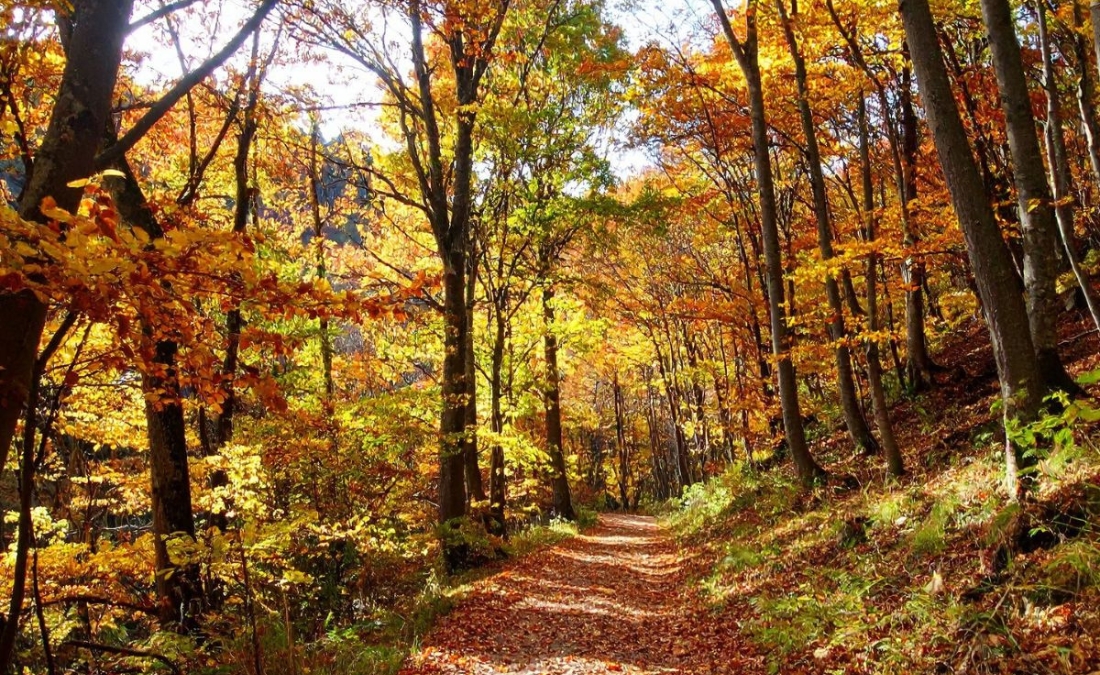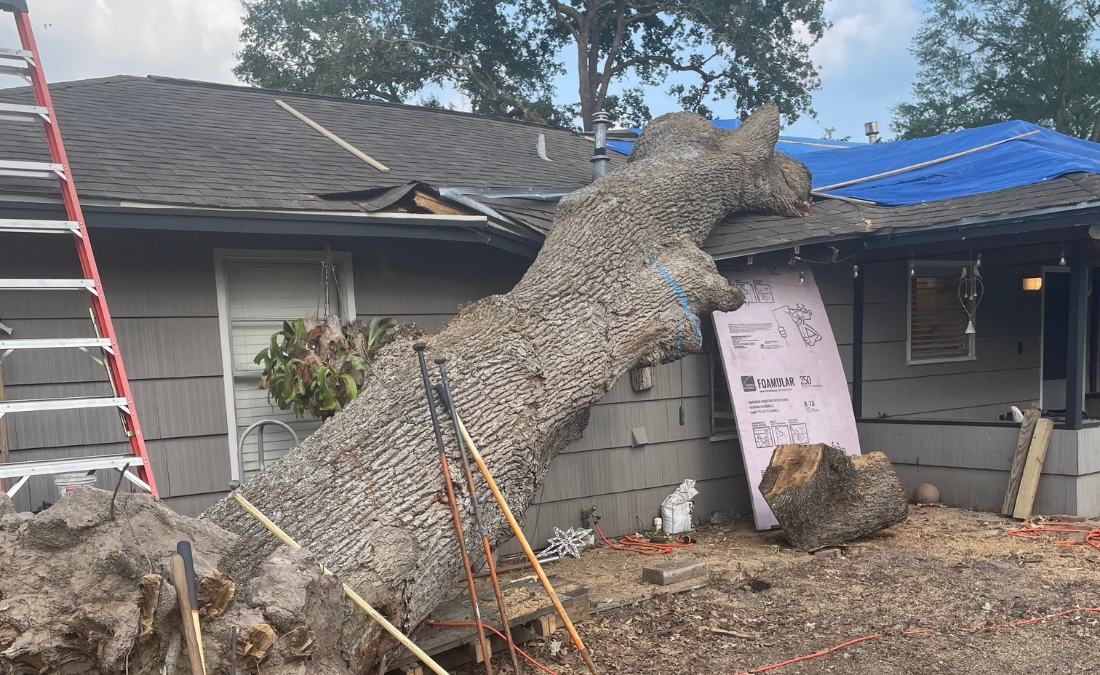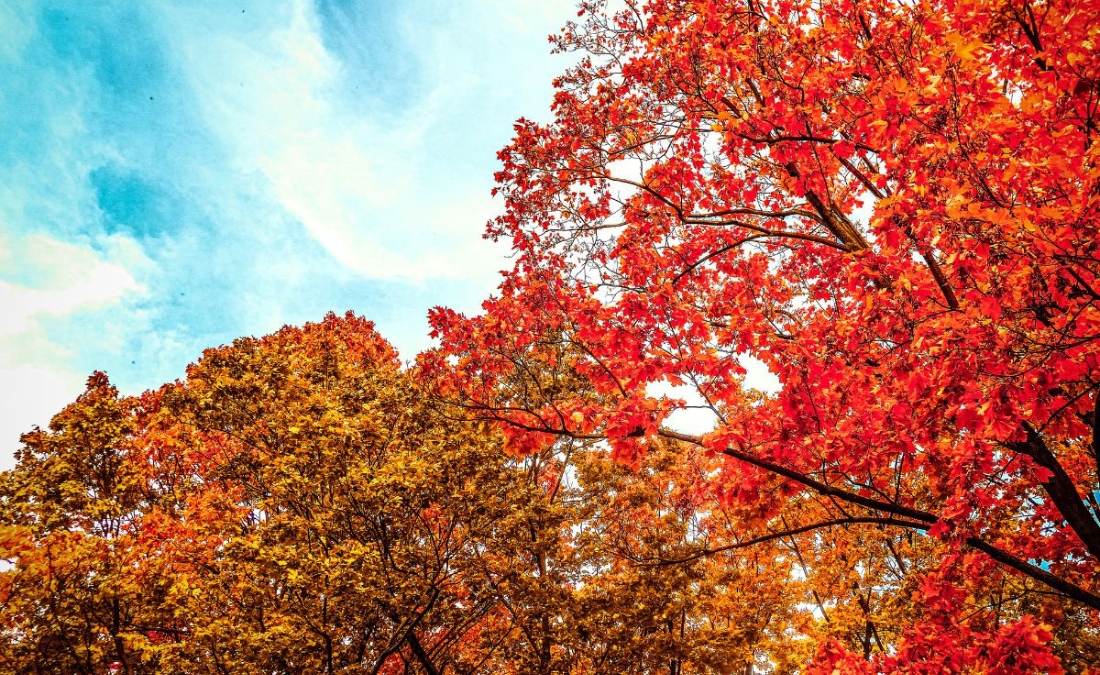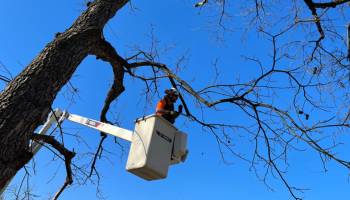How to Protect Your Wichita Trees from Emerald Ash Borer and Other Invasive Pests
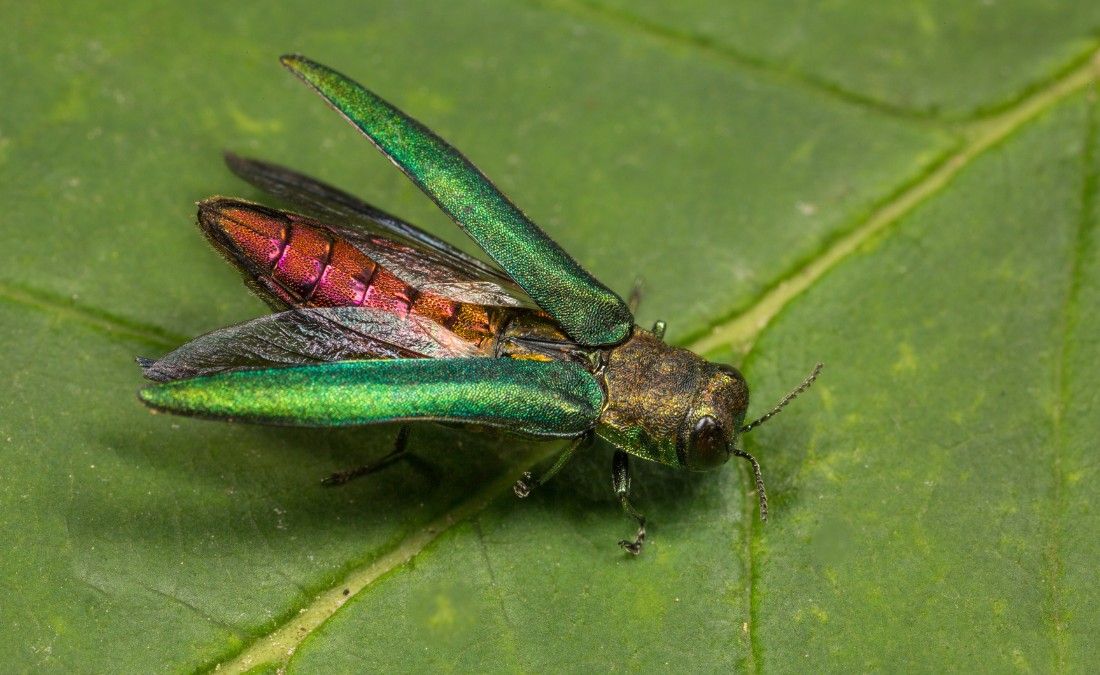
Worried about emerald ash borer in Wichita? Learn which invasive insects are already here – and what you can do now to protect your trees before they spread.
By now, you’ve probably heard that emerald ash borer is spreading fast across Kansas, having already been confirmed in 15 counties. What you might not know is that it’s not the only invasive insect threatening trees here in Wichita. Others are starting to show up, too, and they can be just as destructive. If you want to keep your trees healthy, now’s the time to have them inspected, consider preventive treatment, and make a plan
Key Takeaways:
- The emerald ash borer (EAB) is Kansas’ most significant invasive tree insect threat, and while it hasn’t reached Sedgwick County yet, it will likely impact us soon.
- Early detection of invasive insects requires monitoring for symptoms like increased insect activity, damaged foliage, trunk holes, and dead patches in the tree canopy.
- Maintaining tree health through proper watering during droughts, using mulch and fertilizer for nutrients, and pruning in winter helps trees resist pest infestations.
- Manual control methods like destroying visible insects and egg masses can help reduce populations of some invasive species.
- Professional preventative insecticide treatments applied through soil drenches or trunk injections are the most effective way to protect valuable trees from invasive insects.
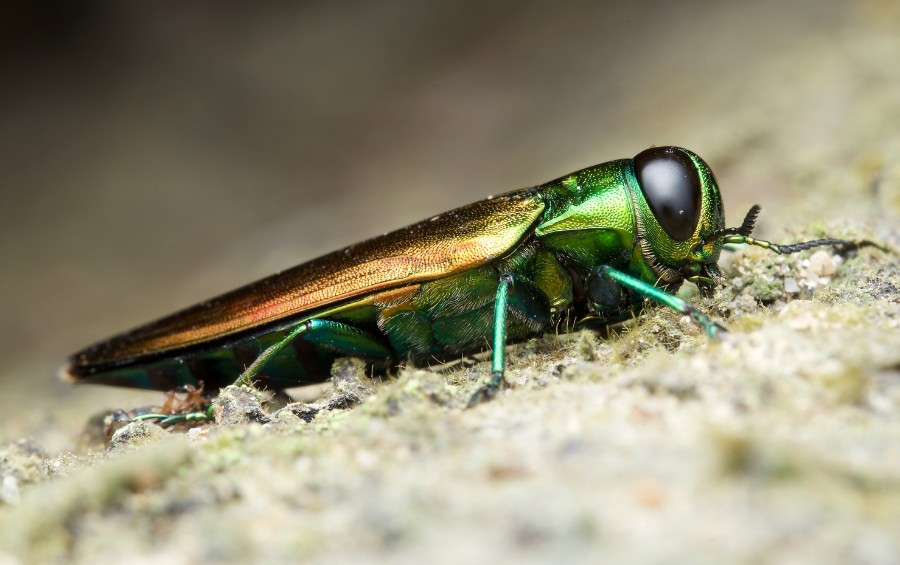
5 Ways You Can Protect Your Trees from EAB and Other Invasive Insects
With no natural predators and controls, invasive insects are a significant concern for our Wichita ecosystem. It’s up to homeowners to protect their trees from invasive species and keep the trees we have healthy and stress-free.
1. Understand the Pests to Watch Out For
Knowing what kind of pests to keep an eye out for is vital, as you’ll have a better understanding of what to look for and what species are most at risk.
The most notorious invasive tree insect in Kansas is the emerald ash borer (EAB). This invasive insect attacks ash trees, killing them rapidly and causing them to become potentially hazardous. EAB first appeared in northeastern Kansas in 2012 and has continued to spread southeast.
“The Kansas Forest Service estimates there are over 56 million ashes in the state, making up a significant portion of our rural and urban forests. The good news for Wichita residents is that, as of 2025, there has not been an official sighting of EAB in Sedgwick County. However, it is likely only a matter of time before the pest reaches us, and it could already be in our area undetected.” – Cody Siegrist, Plant Health Care Specialist at Arbor Masters
Other established invasive species in Kansas are the brown marmorated stink bugs that damage crops and the spotted wing drosophila that attacks fruit.
Other invasive species that haven’t established in Kansas but could potentially become problems include:
2. Monitor for Typical Symptoms of Insect Infestation
Although different insects attack your trees in various ways, the damage often produces similar symptoms. Some early signs indicating your tree may be dealing with an invasive insect infestation include:
- Increased Insect Activity: A few insects flying around your trees are often not something to worry about. However, seeing a swarm of insects around a tree could point to an infestation.
- Damaged or Discolored Foliage: Insects often attack the leaves, either indirectly or directly. Some may feed on the foliage, while others harm the tree’s internal structure and cause the leaves to become discolored or wilt.
- Holes on the Trunk: Wood-boring insects, like the emerald ash borer, will leave small entry and exit holes on the trunk.
- Dead Patches on the Canopy: A couple of dead leaves here or there are natural for trees. If large patches of the tree’s canopy are dead, this is likely a sign of a critical problem with your trees.
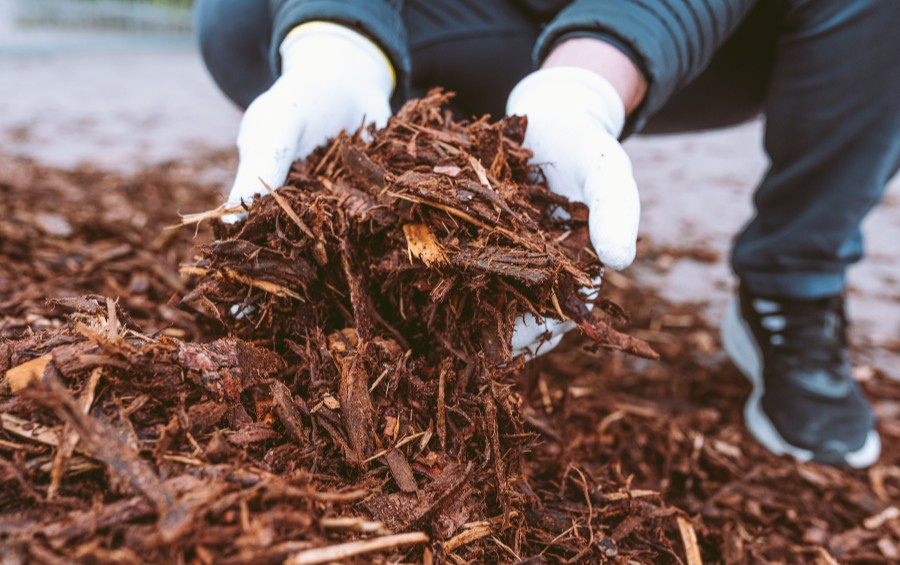
3. Keep Trees in Good Health
Along with using chemical controls, we often recommend regular tree care tasks to keep your trees in good health and free of stress. Like the human body, trees can better fight off external problems when in good health.
Tree insects are more likely to target stressed trees. Some simple ways to help your tree include:
- Provide Supplemental Water During a Drought: When a drought strikes Wichita, something that is unfortunately common in Sedgwick County in recent years, you can help your trees by watering them. Deep soil hydration will allow the roots to take up water and reduce stress.
- Use Mulch and Fertilizer to Provide Nutrients: Trees use up nutrients in the soil, and the soil can’t replenish them as homeowners rake up fallen leaves and broken branches. Organic mulch around your tree naturally decomposes, adding nurients to the soil. And fertilizers can serve as a quick boost to replenish a deficiency.
- Prune During the Winter: While there are reasons to do some tree pruning in any season, winter pruning causes the lowest stress on a tree. Winter pruning also allows the tree to seal the wound before insects become active again, as insects love to attack pruning wounds on trees.
4. Kill Adult Insects and Destroy Eggs
Squashing bugs is nobody’s idea of a fun afternoon. However, killing any adult invasive insects you see can help reduce their population and the damage they cause. It won’t wipe out the population, but every little bit helps.
What’s even more important is finding any eggs the insects lay and destroying them. You can’t directly harm the eggs of the deadliest insect, EAB, but you can stay on the lookout for egg masses from the brown marmorated stink bug. They typically lay nearly 30 eggs on the underside of host plants.
To destroy these egg masses, scrape them into a bucket of warm, soapy water.
5. Use Preventive Insecticides to Control Populations
The final piece of the puzzle to control invasive species is to use preventive insecticides. Arborists typically get these insecticides to trees through soil drenches or trunk injections before pest activity ramps up in the growing season.
While you may be able to purchase the necessary chemicals to control pests yourself, getting the timing right and performing trunk injections isn’t really possible for a homeowner. Let an arborist handle these jobs.
Frequently Asked Questions About Invasive Tree Insects in Kansas
We understand invasive insects are a worrying topic for Wichita homeowners, so we’ve answered some of the common questions we hear about the topic.
Can I introduce beneficial insects to deal with invasive pests?
While introducing beneficial insects that prey on problematic bugs is a core part of Integrated Pest Management, it is not as effective against invasive species. While they can kill some invasive species, they won’t be able to keep populations in check, as these pests have no natural counters.
Should I remove my ash tree preemptively?
As we prepare for EAB to move into Sedgwick County, removing any ashes may seem tempting. However, if you have old or high-value ash trees, consider having a professional treat them to protect them from an EAB infestation.
If you are planting a new tree, consider avoiding ashes and planting species that are not at risk from invasive insects.
How often should I have a professional treat my trees?
Your treatment schedule will depend on the species and the active ingredients in the insecticide. Your arborist should work out a schedule with you after your first treatment. Many insecticides require treatment every year or two.
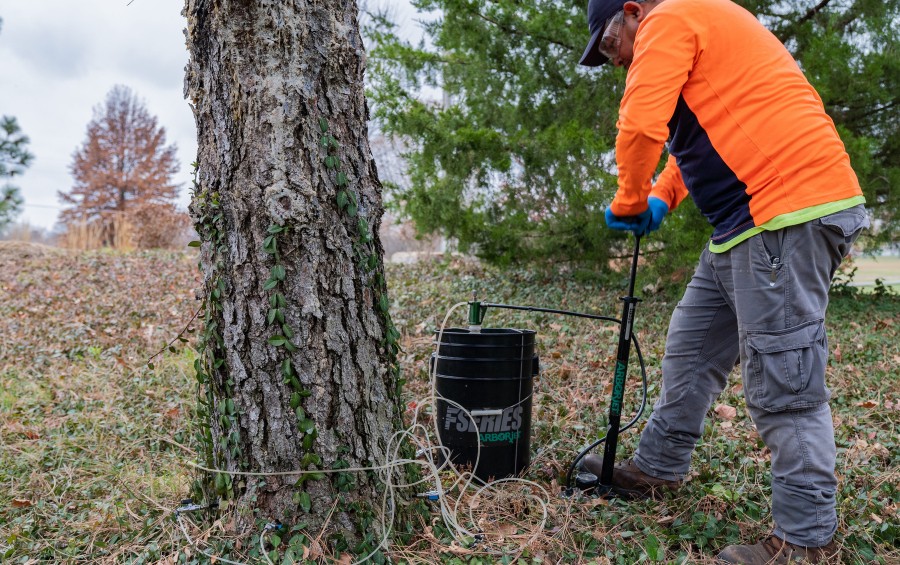
Get Ahead of Emerald Ash Borer and Other Pests with Arbor Masters
As invasive species move into the Wichita area, be aware of the danger they pose to your trees and what you can do to protect them. We can mitigate many of the worst effects with prompt action and save as many trees as possible.
Our team at Arbor Masters of Wichita can provide preventive treatments for your at-risk trees to protect them from EAB and other invasive insects. We can also inspect your trees and determine if they need any additional help to survive attacks from pests. Call us today at 316-838-3111 or request a quote online.
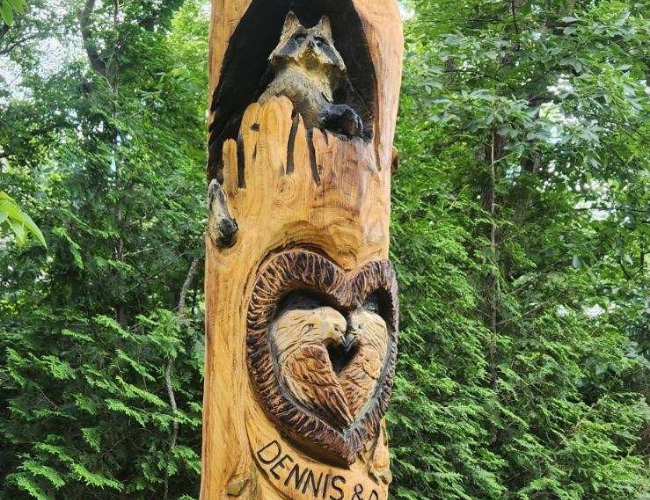
Get the latest local news, tree care tips, special offers, and company updates directly to your inbox! It's easy to subscribe and there's no spam - we promise.
"*" indicates required fields


